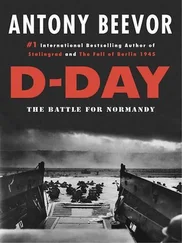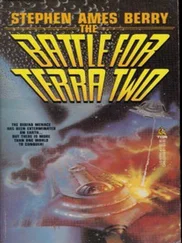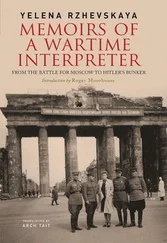Ann Bausum - Unraveling Freedom - The Battle for Democracy on the Homefront During World War I
Здесь есть возможность читать онлайн «Ann Bausum - Unraveling Freedom - The Battle for Democracy on the Homefront During World War I» — ознакомительный отрывок электронной книги совершенно бесплатно, а после прочтения отрывка купить полную версию. В некоторых случаях можно слушать аудио, скачать через торрент в формате fb2 и присутствует краткое содержание. Жанр: unrecognised, на английском языке. Описание произведения, (предисловие) а так же отзывы посетителей доступны на портале библиотеки ЛибКат.
- Название:Unraveling Freedom: The Battle for Democracy on the Homefront During World War I
- Автор:
- Жанр:
- Год:неизвестен
- ISBN:нет данных
- Рейтинг книги:3 / 5. Голосов: 1
-
Избранное:Добавить в избранное
- Отзывы:
-
Ваша оценка:
- 60
- 1
- 2
- 3
- 4
- 5
Unraveling Freedom: The Battle for Democracy on the Homefront During World War I: краткое содержание, описание и аннотация
Предлагаем к чтению аннотацию, описание, краткое содержание или предисловие (зависит от того, что написал сам автор книги «Unraveling Freedom: The Battle for Democracy on the Homefront During World War I»). Если вы не нашли необходимую информацию о книге — напишите в комментариях, мы постараемся отыскать её.
Unraveling Freedom: The Battle for Democracy on the Homefront During World War I — читать онлайн ознакомительный отрывок
Ниже представлен текст книги, разбитый по страницам. Система сохранения места последней прочитанной страницы, позволяет с удобством читать онлайн бесплатно книгу «Unraveling Freedom: The Battle for Democracy on the Homefront During World War I», без необходимости каждый раз заново искать на чём Вы остановились. Поставьте закладку, и сможете в любой момент перейти на страницу, на которой закончили чтение.
Интервал:
Закладка:
UNRAVELING FREEDOM
 The Battle for Democracy on the Home Front During World War I
The Battle for Democracy on the Home Front During World War I
ANN BAUSUM

For Kedron
Text copyright © 2010 Ann Bausum
All rights reserved.
Reproduction of the whole or any part of the contents without written permission from the National Geographic Society is prohibited.
PUBLISHED BY THE NATIONAL GEOGRAPHIC SOCIETY
John M. Fahey, Jr., President and Chief Executive Officer
Gilbert M. Grosvenor, Chairman of the Board
Tim T. Kelly, President, Global Media Group
John Q. Griffin, Executive Vice President; President, Publishing Nina D. Hoffman, Executive Vice President; President, Book Publishing Group
Melina Gerosa Bellows, Executive Vice President, Children’s Publishing
PREPARED BY THE BOOK DIVISION
Nancy Laties Feresten, Vice President, Editor in Chief, Children’s Books
Jonathan Halling, Design Director, Children’s Publishing
Jennifer Emmett, Executive Editor, Reference and Solo, Children’s Books
Carl Mehler, Director of Maps
R. Gary Colbert, Production Director
Jennifer A. Thornton, Managing Editor
STAFF FOR THIS BOOK
Jennifer Emmett, Editor
Jim Hiscott, Art Director
Lori Epstein, Illustrations Editor
Marty Ittner, Designer
Kate Olesin, Editorial Assistant
Grace Hill, Associate Managing Editor
Lewis R. Bassford, Production Manager
Susan Borke, Legal and Business Affairs
MANUFACTURING AND QUALITY MANAGEMENT
Christopher A. Liedel, Chief Financial Officer
Phillip L. Schlosser, Vice President
Chris Brown, Technical Director
Nicole Elliott, Manager
Rachel Faulise, Manager
A NOTE ON THE DESIGN
The design inspiration for Unraveling Freedom is drawn from the propaganda posters of World War I. You’ll see examples of these bold, graphic pieces on Chapter 2 2 “We must throw the influence of this nation in behalf of a plan…. This is the part I think you are destined to play in this world tragedy, and it is the noblest part that has ever come to a son of man.” EDWARD M. HOUSE, ADVISING WOODROW WILSON TO TAKE AMERICA TO WAR, 1915
and Chapter 3 Конец ознакомительного фрагмента. Текст предоставлен ООО «ЛитРес». Прочитайте эту книгу целиком, купив полную легальную версию на ЛитРес. Безопасно оплатить книгу можно банковской картой Visa, MasterCard, Maestro, со счета мобильного телефона, с платежного терминала, в салоне МТС или Связной, через PayPal, WebMoney, Яндекс.Деньги, QIWI Кошелек, бонусными картами или другим удобным Вам способом.
. The title text for the book is set in Trade Gothic and Marmalade, and the body text is set in Minion Pro. The palette for the book echoes the colors of the American flag—red, white, and blue. To add new life to old photographs and to draw the eye to the central subject matter of an image, some of the pictures in the book (see, for example, Chapter 3) are silhouetted with a special digital technique that pulls the subject of the photograph forward in the frame, while the background is tinted with a color. The colored diagonal design elements, and the frequent angling of the images contribute to a sense of disruption, of things being off balance. This feeling echoes the turbulent sentiment of the times, brought on by the first global war and the erosion of liberties on the home front.
Echoes of history. The September 11, 2001 terrorist attacks on the United States (closing endpapers, headline news) prompted the nation’s entry into wars in Iraq and Afghanistan; almost a century earlier, the sinking of the Lusitania helped propel the United States toward combat during World War I. The New York Times coverage of the 1915 maritime disaster (opening endpapers) reproduced a German warning of possible attacks (lower right, headlined “NOTICE!”).
The graphic foreword by Ted Rall, President of the Association of American Editorial Cartoonists, evokes the era of political cartooning that flourished during World War I.
Library of Congress Cataloging-in-Publication Data
Bausum, Ann.
Unraveling freedom: the battle for democracy on the home front during World War I / by Ann Bausum.
p. cm.
Includes bibliographical references and index.
ISBN: 978-1-4263-0728-7
1. United States—Politics and government—1913-1921—Juvenile literature. 2. World War, 1914-1918—Social aspects—United States—Juvenile literature. 3. German Americans—Social conditions—20th century—Juvenile literature. I. Title.
E780.B38 2010
940.3’73—dc22
2010010631
Version: 2017-07-05
CONTENTS
Foreword
Introduction
CHAPTER 1 SUNK
CHAPTER 2 A CALL TO ARMS
CHAPTER 3 OFF TO KILL THE HUN
CHAPTER 4 HOLD YOUR TONGUE
CHAPTER 5 BETWEEN WAR AND PEACE
Afterword
Guide to Wartime Presidents
Timeline
Notes and Acknowledgments
Bibliography
Resource Guide
Citations
Illustrations Credits
FOREWORD
BY TED RALL
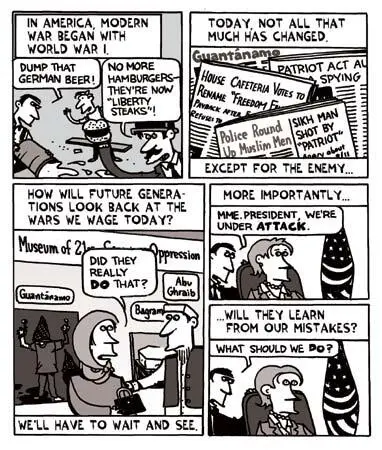
Ted Rall is President of the Association of American Editorial Cartoonists. Visit him online at: http://www.rall.com/
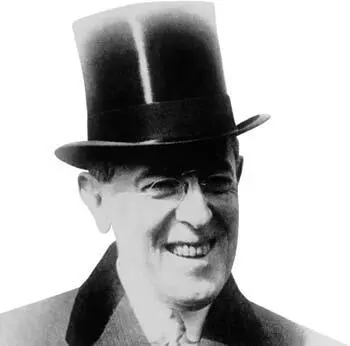
Wilson at war. “It would be the irony of fate if my administration had to deal chiefly with foreign affairs,” observed Woodrow Wilson before his inauguration as President of the United States. The outbreak of war in Europe a year later assured just that.
“We shall fight for the things which we have always carried nearest to our hearts [until we] make the world itself at last free.”
WOODROW WILSON, CONCLUDING REMARKS FROM HIS WAR MESSAGE TO CONGRESS, APRIL 2, 1917
INTRODUCTION
IN THE SPRING OF 1917, as the United States prepared to declare war on Germany and enter the fight that would become known as World War I, perhaps as many as a quarter of all Americans had either been born in Germany or had descended from Germans. My grandfather was one of them. But Frederic William Bausum and his family could be considered some of the lucky German-Americans on the eve of war. They spoke English and had no divided loyalty to an old-world country. They had grown up in the United States, married across ethnic lines, homesteaded on the Western plains, and embraced the customs and beliefs of the country. They had, in short, become Americanized.
Thousands of other German-Americans were less fortunate. Almost overnight, the language they spoke by birth, the relatives they retained ties to from their past, the books they read, the schools they attended, even the food and drink they found most familiar and enjoyable, all became associated with the enemy: Germany.
Читать дальшеИнтервал:
Закладка:
Похожие книги на «Unraveling Freedom: The Battle for Democracy on the Homefront During World War I»
Представляем Вашему вниманию похожие книги на «Unraveling Freedom: The Battle for Democracy on the Homefront During World War I» списком для выбора. Мы отобрали схожую по названию и смыслу литературу в надежде предоставить читателям больше вариантов отыскать новые, интересные, ещё непрочитанные произведения.
Обсуждение, отзывы о книге «Unraveling Freedom: The Battle for Democracy on the Homefront During World War I» и просто собственные мнения читателей. Оставьте ваши комментарии, напишите, что Вы думаете о произведении, его смысле или главных героях. Укажите что конкретно понравилось, а что нет, и почему Вы так считаете.


